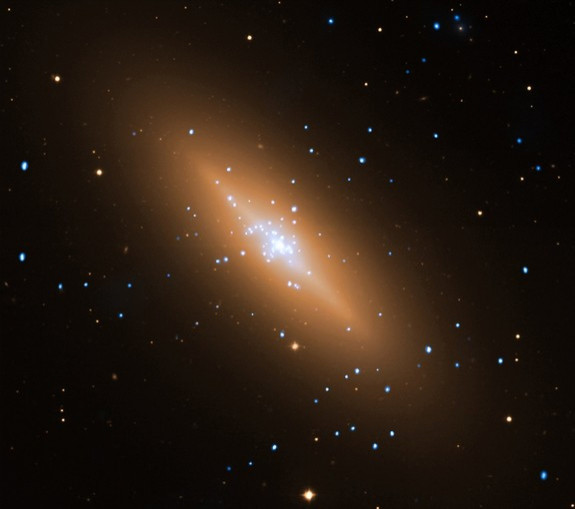Camera Catches Giant Black Hole Devouring Gas [VIDEO, PHOTOS]

Seen clearly via X-ray for the first time, a massive black hole has been pictured devouring hot gas in its vicinity.
The observations from NASA's Chandra X-ray Observatory will give astronomers a better understanding of how black holes grow by using intense gravity to pull in their surroundings, consuming the material, Space.com reported.
The black hole is at the center of a large galaxy known as NGC 3115, located about 32 million light-years away from Earth.
A significant amount of data has previously shown material falling toward black holes, but none have displayed such a clear signature of hot gas, researchers said.
"It's exciting to find such clear evidence for gas in the grip of a massive black home," Ka-Wah Wong of the University of Alabama in Tuscaloosa said in a statement. "Chandra's resolving power provides a unique opportunity to understand more about how black holes capture material by studying this nearby project."
Wong is the lead author of the new, black hole study published in the July 20 issue of The Astrophysical Journal Letters.
By imaging the hot gas at different distances from the supermassive black hole, scientists have observed a critical threshold where the motion of gas first becomes dominated by the black hole's gravity inward, making it hotter and brighter, something that was confirmed by the X-ray observations. The distance from the black hole is known as the "Bondi radius."
The astronomers also found that the temperature of the gas begins to rise at a distance of about 700 light-years from NGC 3115's black hole, which indicates the location of the Bondi radius, suggesting that the black hole in the center has a mass about two billion times that of the sun. This makes it the closest black hole of that size to Earth.
Chandra's data also shows the gas closer to the hole is denser closer to the center, as predicted.
Still, there are mysteries to be uncovered. Making assumptions about how much of the gas's energy changes into radiation, astronomers expect to find a source that is more than a million times brighter in X-rays that what is seen in NGC 3115.
"A leading mystery in astrophysics is how the area around massive black holes can stay so dim, when there's so much fuel available to light up," said the study's co-author Jimmy Irwin, also of the University of Alabama. "This black hole is a poster child for this problem."
© Copyright IBTimes 2024. All rights reserved.





















